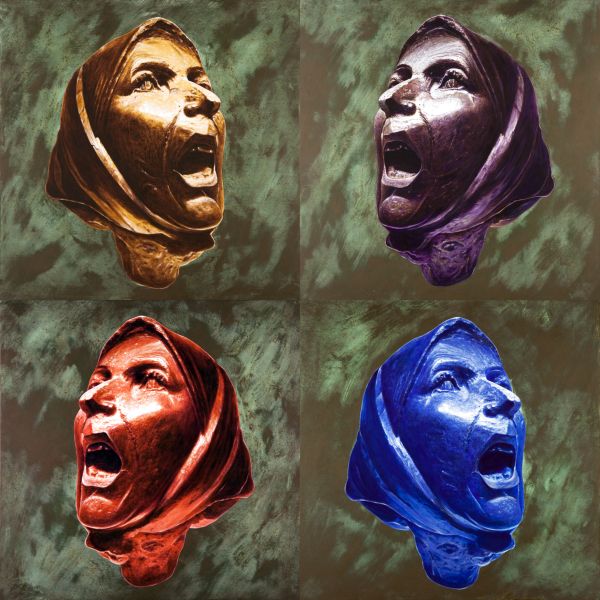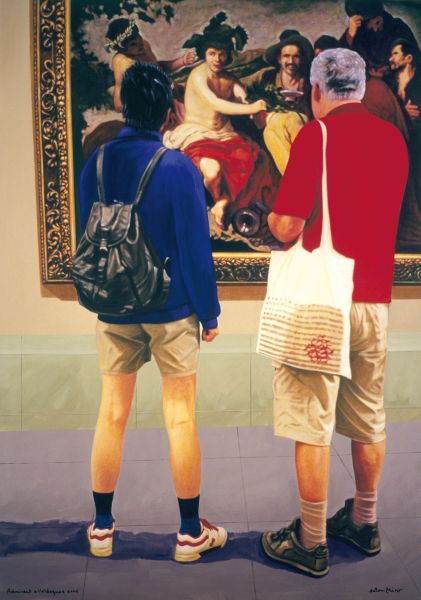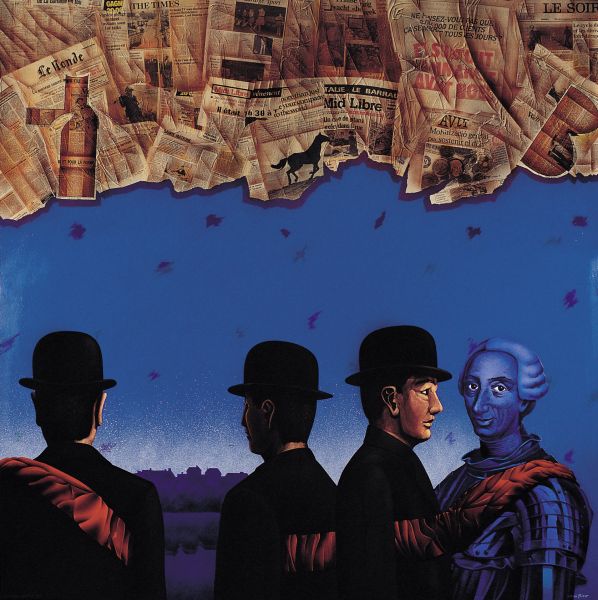Antoni Miró
From his early artistic activity with Grup Alcoiart or his social critique with Gruppo Denunzia, one could soon realise that Antoni Miró’s confrontational and oppositional practice was removed from formalist discourses. In fact, Antoni Miró’s brand of critical realism shares points in common with Equipo Crónica and Equipo Realidad inasmuch as their engagement in social issues and the deployment of a heavily critical visual underpinning. Antoni Miró’s work finds a place of its own within a certain tradition in contemporary art which Vicente Aguilera Cerni defined as “Crónica de la Realidad”, or chronicle of reality. While his work is close to Equipo Crónica, Equipo Realidad, Juan Genovés, Canogar, and others in generational terms, it possesses singular features and its own stylistic and expressive qualities. With a background removed from traditional fine arts or arts and crafts schools, at the beginning of his career he did not take an active part in the art collectives in the city of Valencia at the time or in the circle engaged with critical realism. His first works featured dramatic, radical images that adopted a stance defending the integrity of man and his declaration of freedom. A subsequent evolution took place in Antoni Miró’s work as it shifted towards a more reposed style though without reneging on its incisiveness, while at once positing a rethinking of the very act of painting. The repertoire of images which Antoni Miró has recreated in his works has gradually expanded his world of references, in which he addresses everything from sex to politics, from a pop reading of the history of art to a protest against violence, and a sarcastic mocking of leaders, monuments and events. His painting also transforms everyday objects, machinery and commodities into the object of poetic reflection. In his work Antoni Miró reveals a steadfast leaning towards symbolism in images charged with paradoxes, expressive metaphors impregnated with literary figures, with which he forges an imaginative and thoughtful worldview. In the construction of his painterly images he starts off from other pre-existing images he culls both from the history of painting as well as from the mass media, and even from comics and advertising. We can find the most varied references to different moments in the history of art such as paintings like Veláquez’s Las Meninas, The Drunks, The Forge of Vulcan, Portrait of Innocent X and Portrait of Count Duke of Olivares, Titian’s Equestrian Portrait of Charles V, Meng’s Portrait of Carlos III, Goya’s Self-portrait, The Duchess of Alba, The Wounded Mason and The Milkmaid of Bordeaux, Picasso’s Les Demoiselles d’Avignon and Guernica, Lichtenstein’s fighter planes, a portrait of Picasso with a paper hat or even of the comic character Mort. Whether borrowed from old masters or from popular culture, these images have gone on to form part of the cultural “collective unconscious” and therein the efficacy of Miró’s ironic and at times sarcastic use of these icons.








